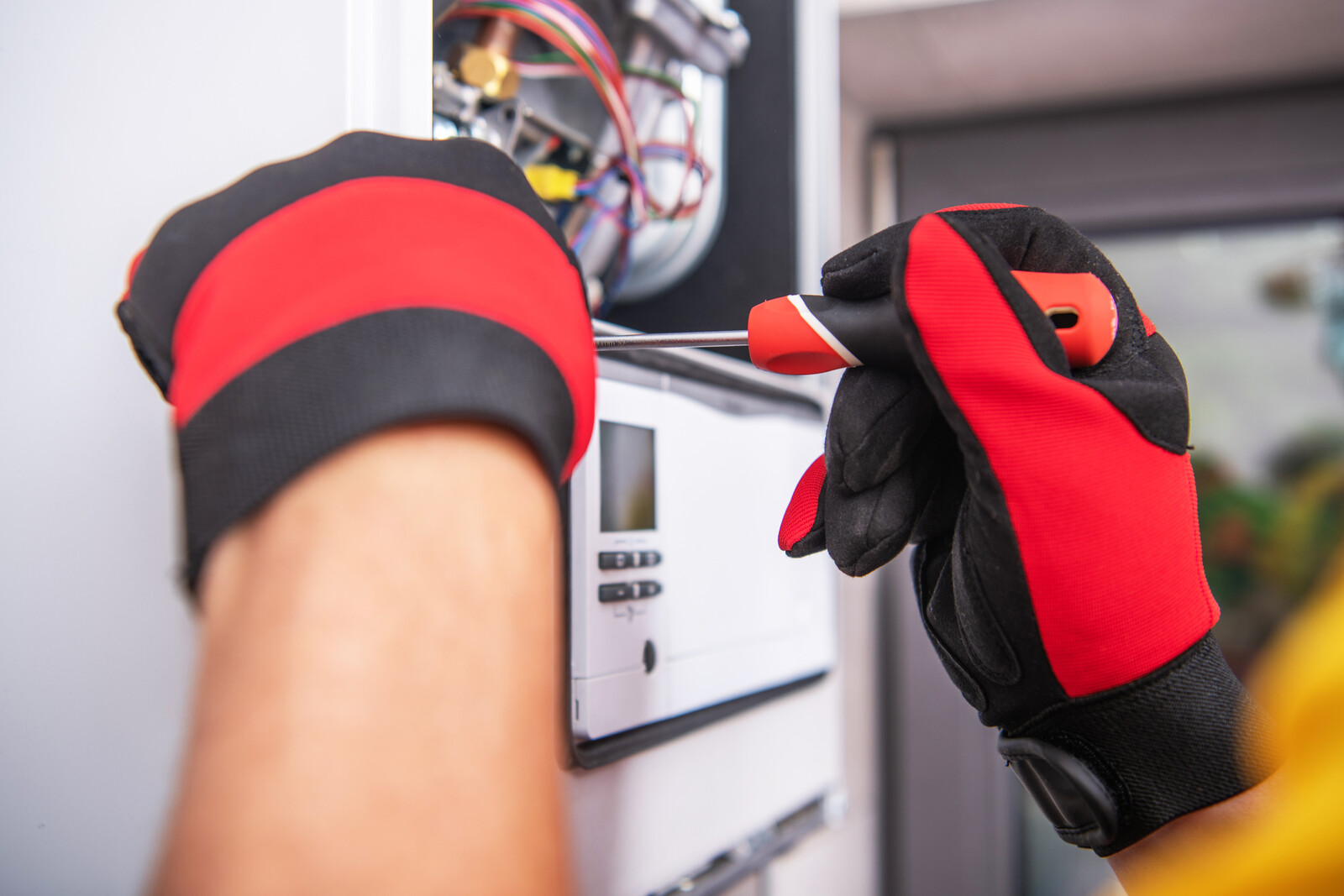
Maintaining your HVAC system is essential for ensuring your home remains comfortable and energy-efficient year-round. Regular HVAC maintenance helps prevent unexpected breakdowns, extends the lifespan of your equipment, and ensures optimal performance.
For Toronto homeowners, understanding the importance of HVAC maintenance and knowing what to expect during a maintenance visit can help you prepare and get the most out of the service.
Initial Inspection and Assessment
When the HVAC technician arrives at your home, they will introduce themselves and provide a brief overview of the maintenance process. This initial interaction is important as it sets the tone for the visit and ensures that you feel comfortable and informed. The technician will explain what they will be doing and how long the visit is expected to take.
Visual Inspection of the HVAC System
The first step in the maintenance visit is a comprehensive visual inspection of your HVAC system. The technician will examine the various components of your heating and cooling equipment, including the furnace, air conditioner, heat pump, ductwork, and any other relevant parts. This inspection helps identify any obvious signs of wear and tear, damage, or other issues that may need attention.
During the visual inspection, the technician will look for:
- Signs of Wear and Tear: Checking for any visible damage or wear on components such as belts, motors, and electrical connections.
- Leaks or Blockages: Identifying any leaks in the system or blockages in the ductwork that could affect performance.
- Cleanliness: Assessing the cleanliness of components like coils and filters, which are essential for efficient operation.
- Proper Installation: Ensuring all parts are correctly installed and secured.
Discussion of Any Known Issues or Concerns
After the visual inspection, the technician will take the time to discuss any known issues or concerns you may have about your HVAC system. This is an opportunity for you to provide valuable input about any problems you’ve noticed, such as strange noises, inconsistent temperatures, or higher-than-normal energy bills. Sharing this information can help the technician diagnose and address specific issues more effectively.
The discussion will typically cover:
- Recent Performance: Any changes in the system's performance or efficiency that you have observed.
- Specific Problems: Detailed descriptions of any issues like unusual sounds, odors, or operational inconsistencies.
- Previous Maintenance: Information about any recent repairs or maintenance work that has been done on the system.
Detailed System Check
Checking and Replacing Filters
One of the first tasks the technician will perform during the detailed system check is examining the HVAC filters. Filters maintain good air quality and ensuring the system operates efficiently. The technician will:
- Inspect Filters: Check the condition of the filters to see if they are clogged or dirty.
- Replace Filters: If the filters are found to be dirty or worn out, they will be replaced with new ones to ensure optimal airflow and filtration.
Regularly replacing filters helps prevent dust and debris from accumulating in the system, which can reduce efficiency and lead to potential breakdowns.
Inspecting and Cleaning Components
The technician will then move on to inspecting and cleaning various components of the HVAC system. This process includes:
- Coils: Cleaning the evaporator and condenser coils to remove dirt and grime that can impede heat transfer.
- Fans and Blowers: Inspecting and cleaning the fans and blowers to ensure they are free of dust and debris, which can affect airflow and efficiency.
- Motors and Belts: Checking motors and belts for signs of wear and tear and lubricating moving parts to reduce friction and wear.
By keeping these components clean and in good working condition, the system can operate more efficiently and with less strain, reducing the risk of unexpected failures.
Testing Thermostat Settings
The thermostat is a critical component that regulates the temperature in your home. During the maintenance visit, the technician will:
- Check Thermostat Settings: Verify that the thermostat settings are correct and functioning properly.
- Calibrate the Thermostat: Make any necessary adjustments to ensure accurate temperature control and efficient system operation.
- Test Programmable Features: If you have a programmable thermostat, the technician will test its features to ensure they are working correctly and helping to save energy.
Proper thermostat operation is essential for maintaining a comfortable indoor environment and preventing energy waste.
Ensuring Proper Airflow and Ventilation
Adequate airflow and ventilation are vital for the efficient operation of your HVAC system. The technician will:
- Inspect Ductwork: Check the ductwork for any leaks, blockages, or damage that could restrict airflow.
- Ensure Ventilation: Ensure that all vents and registers are open and unobstructed to allow proper air distribution throughout your home.
- Adjust Airflow: Make any necessary adjustments to optimize airflow and ensure that all areas of your home are receiving adequate heating or cooling.
By ensuring proper airflow and ventilation, the technician helps maintain system efficiency and improves indoor air quality, contributing to a healthier and more comfortable living environment.
System Testing and Calibration
Running the System to Check Performance
After completing the initial inspection and detailed system check, the technician will run your HVAC system to assess its overall performance.
- Activating the System: Turning on the heating or cooling system to ensure it starts up correctly and operates smoothly.
- Observing Operation: Monitoring the system as it runs to detect any unusual noises, vibrations, or operational issues.
- Checking Response Time: Ensuring the system responds promptly to thermostat adjustments and reaches the desired temperature efficiently.
Running the system helps the technician identify any performance issues that might not be evident during a static inspection.
Measuring Temperature and Pressure Levels
To ensure your HVAC system is operating within optimal parameters, the technician will measure key performance metrics:
- Temperature Levels: Using specialized tools, the technician will measure the temperature of the air coming from the vents and the return air to ensure the system is effectively heating or cooling your home.
- Pressure Levels: Checking refrigerant pressure in the cooling system and gas pressure in the heating system to confirm they are within the manufacturer’s specified ranges.
Accurate measurements of temperature and pressure levels are critical for diagnosing potential problems and ensuring the system is running efficiently.
Calibrating the System for Optimal Efficiency
Based on the performance data collected, the technician will calibrate various system components to enhance efficiency and reliability:
- Adjusting Thermostat Settings: Fine-tuning the thermostat to ensure precise temperature control and energy efficiency.
- Balancing Airflow: Making adjustments to the ductwork and airflow settings to ensure even distribution of air throughout your home.
- Optimizing System Settings: Tweaking settings on the HVAC unit itself, such as fan speed, to improve performance and reduce energy consumption.
Calibration ensures that your HVAC system operates at peak efficiency, providing maximum comfort while minimizing energy costs. By fine-tuning the system, the technician helps prevent wear and tear on components, extending the lifespan of your equipment.
Addressing Potential Issues
During the maintenance visit, the technician will carefully inspect the HVAC system for any signs of wear and tear or damage.
- Detailed Examination: Closely examining components such as belts, motors, electrical connections, and other parts for signs of deterioration.
- Using Diagnostic Tools: Employing specialized tools to detect issues that might not be visible to the naked eye, such as electrical problems or internal wear.
- Checking System Logs: Reviewing any error codes or system logs that might indicate underlying issues needing attention.
Identifying worn or damaged parts early helps prevent more significant problems and costly breakdowns in the future.
Recommending Repairs or Replacements
If the technician discovers any parts that are worn or damaged, they will provide professional recommendations on the best course of action:
- Repair Options: For issues that can be resolved through repairs, the technician will explain what needs to be done and how it will restore system performance.
- Replacement Parts: If certain components are beyond repair, the technician will recommend replacing them with new, high-quality parts to ensure the system’s reliability and efficiency.
- Preventive Measures: Suggesting preventive measures that can be taken to avoid similar issues in the future, such as regular filter changes or adjustments to system settings.
These recommendations are aimed at maintaining the system’s optimal performance and extending its lifespan.
Providing an Estimate for Any Additional Work Needed
Once the necessary repairs or replacements are identified, the technician will provide a detailed estimate for any additional work required:
- Cost Breakdown: A clear and transparent breakdown of the costs associated with the repairs or replacements, including parts and labor.
- Timeframe: An estimated timeline for completing the work, ensuring you know how long your system might be out of service.
- Warranty Information: Details on any warranties or guarantees provided with the new parts or repair work, offering peace of mind regarding the quality and reliability of the service.
Providing an estimate helps homeowners make informed decisions about their HVAC system’s maintenance and repair needs, ensuring there are no surprises when it comes to cost or timing.
Wrapping Up Your HVAC Maintenance Visit
As the maintenance visit comes to an end, the technician will provide a comprehensive summary of the work performed. This summary will include:
- Detailed Report: A written report outlining all the tasks completed during the visit, such as inspections, cleaning, repairs, and calibrations.
- Condition Assessment: An assessment of the current condition of your HVAC system, highlighting any issues that were identified and addressed.
- Performance Improvements: Information on how the maintenance has improved system performance and efficiency, providing you with tangible benefits from the visit.
This summary ensures you are fully informed about the work done and the status of your HVAC system.
Answering Homeowner Questions
The technician will take the time to answer any questions you may have about your HVAC system and the maintenance performed. This may include:
- Explaining Findings: Clarifying any findings from the inspection and what they mean for your system’s performance and longevity.
- Maintenance Tips: Offering tips and advice on how to maintain your system between professional visits, such as changing filters and keeping vents clear.
- Future Concerns: Addressing any concerns you might have about potential future issues and how to prevent them.
Scheduling the Next Maintenance Visit
To keep your HVAC system in optimal condition, regular maintenance is essential. The technician will help you schedule your next maintenance visit before they leave:
- Recommended Schedule: Providing a recommended maintenance schedule based on your system’s age, usage, and specific needs.
- Setting a Date: Agreeing on a convenient date and time for your next maintenance visit, ensuring it fits into your schedule.
- Reminder Service: Offering to send reminders as the next maintenance date approaches, helping you stay on top of regular upkeep.
Scheduling the next visit in advance ensures that your HVAC system continues to receive the care it needs to operate efficiently and reliably.
Ensuring Year-Round Comfort and Efficiency
To ensure your HVAC system remains in top condition, it’s important to schedule regular maintenance visits. Don’t wait for a breakdown to address your system’s needs. Instead, be proactive in your approach to HVAC care. Contact The Boiler Shoppe to schedule your next maintenance visit and experience the peace of mind that comes with a well-maintained heating and cooling system.
